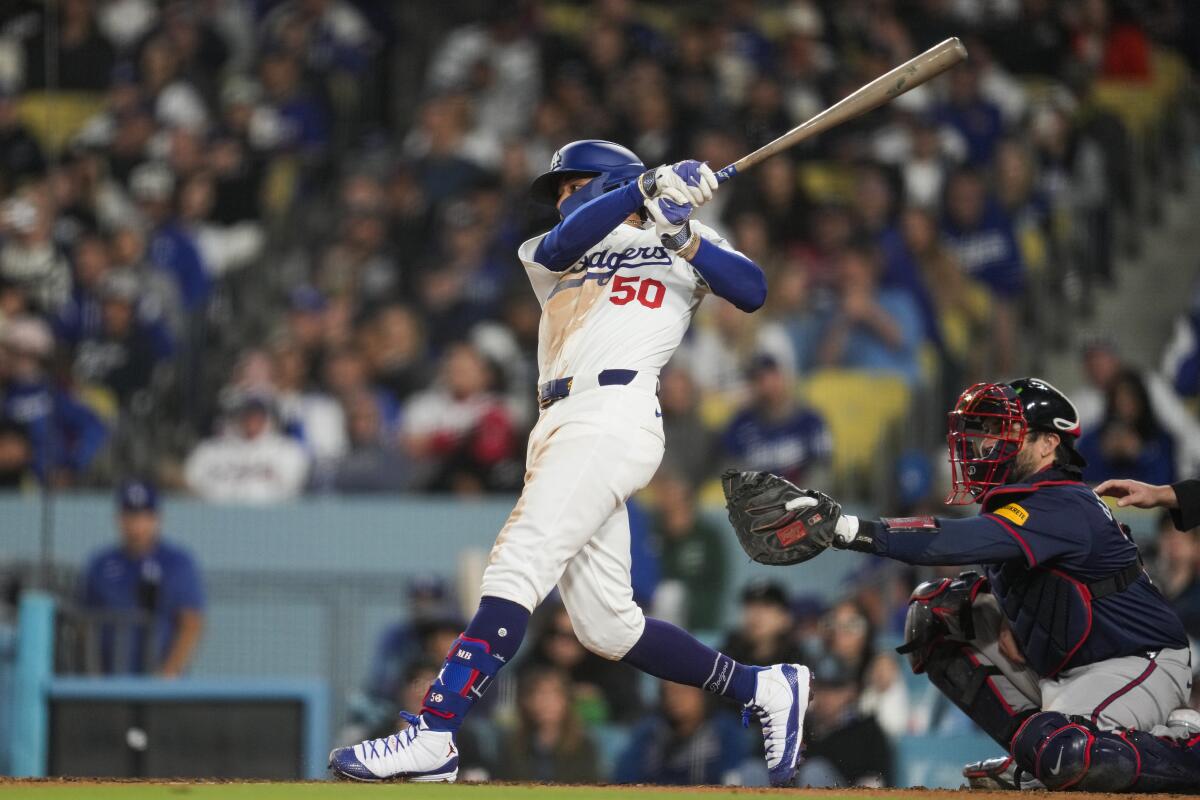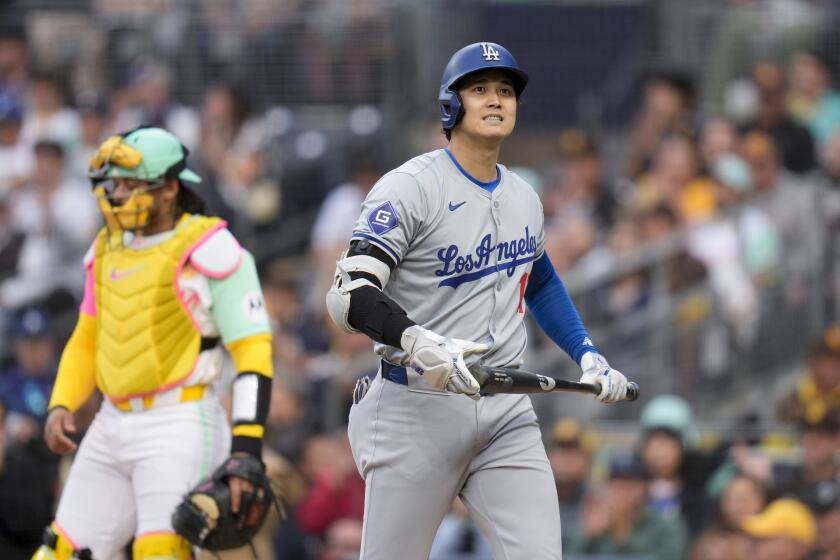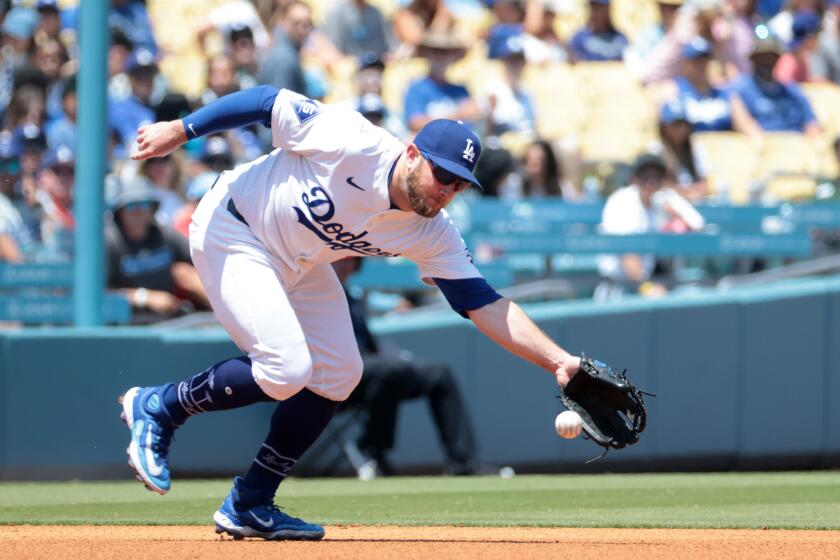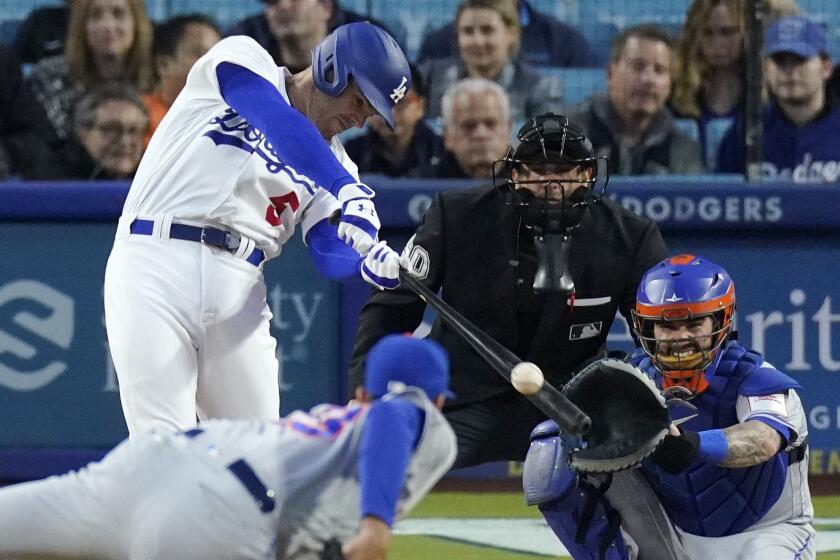Bat speed, blasts, swing length: Where do Ohtani, Betts, Freeman rank in MLB’s new measurables?

You’re the manager perched on the top step of the dugout. Two outs in the ninth inning, score tied, your runner at third base.
Next up is your hitter whose swing generates the fastest bat speed in all of Major League Baseball. Does he hit or do you send up a pinch-hitter whose swing is slower than anyone else in baseball?
Seems like a no-brainer. And it is.
Go with the slowest because his name is Luis Arráez, whose swing meanders an average of 62.4 mph through the strike zone. He’s also the two-time reigning National League batting champion who hit a gaudy .354 last season and has a career average of .324.
And, according to freshly published data by MLB’s Statcast, he leads baseball by squaring up the ball on 43.9% of his swings.
Fastest bat speed? Giancarlo Stanton, whose swings zip an average 80.6 mph, significantly faster than runner-up Oneil Cruz (77.7 mph). Yet Stanton has hit .206 the last three seasons and squares up only 21.6% of his swings.
Dodgers star Shohei Ohtani thought he might be able to play Sunday, but manager Dave Roberts made clear the division of labor that is needed.
The MLB released a mountain of bat-tracking data Monday on its baseballsavant.mlb.com website, the result of more than two years of honing the bat-tracking model that utilizes 12 high-speed cameras around every stadium.
The Dodger whose swing generates the most bat speed? Shohei Ohtani, who ranks No. 19 in baseball at 75.4 mph. The top 20 is a mix of excellent hitters such as Juan Soto, Ronald Acuña Jr., Yordan Álvarez, Aaron Judge and Mike Trout, while also including struggling sluggers Javier Báez and Vladimir Guerrero Jr. in addition to Stanton.
Oh, and Jo Adell, the Angels’ perennially underachieving outfielder, ranks No. 8, sandwiched between Judge and budding superstar Julio Rodríguez. Adell, 25, has hit three home runs in his last five games and has cut down on his strikeout rate this season, so perhaps that glittering 76.2 mph bat speed is about to generate more elite contact — or what MLB calls “blasts,” defined as when a batter squares up a ball and does so with a minimum amount of bat speed.
“A blast, then, is a more valuable and rarer kind of swing, taking only the most valuable combinations of hard swings and contact efficiency,” Baseball Savant says.
Mookie Betts squares up 39% of his swings, third behind Arráez and Soto (39.2%). So while Betts’ bat speed is below average at 69.3 mph, the Dodgers star has elite barrel control and timing. He also has exceptional pitch recognition.
Max Muncy has found his bearings in the field over the last month, stringing together 23 straight errorless games entering a weekend series at San Diego.
Bat speed, then, is just one of several measurements that when examined holistically provide a suite of numbers that help explain why certain hitters have more power, make more contact and make more hard contact than others.
Swing length and sweet spot contact — defined as about six inches below the end of the bat — also are measured. A shorter swing generally produces more contact. A faster swing generally produces more power. A higher percentage of hitting the ball on the sweet spot is without a doubt desirable.
Back to Betts. The 5-foot-9 leadoff hitter’s swing length is 6.9 feet, which ranks in the top 30 shortest swings in MLB. A short swing that squares up the ball is preferable to a longer, faster swing that too often results in connecting with nothing by air. No wonder Betts has won a most valuable player award and finished second in the voting three times.
Scanning for oddities in the data, this one stands out: Freddie Freeman, the Dodgers’ 6-foot-5 first baseman, has the 14th-shortest swing in MLB — even shorter than Betts’ swing — at 6.8 feet, bucking the general rule that tall players have longer swings.
Freddie Freeman is a career .300 hitter and could be on his way to the Hall of Fame thanks to techniques he and father first honed when he was young.
So you, the manager, have digested the data and there you are, on the top step of the dugout with the winning run on third, two out in the ninth. The opposing team’s closer is dealing 99-mph fastballs.
You pinch-hit the 5-10, 170-pound Arráez for the 6-6, 245-pound Stanton and boos rain from the crowd. But fresh in your mind is video of their swings, this one by Arráez that traveled only 4.4 feet, and this one by Stanton that traveled 9.7 feet.
You opt for contact. The pitcher winds and delivers. The beautiful uncertainty inherent in every baseball play takes over. But at least you had the latest numbers to support your decision.
More to Read
Go beyond the scoreboard
Get the latest on L.A.'s teams in the daily Sports Report newsletter.
You may occasionally receive promotional content from the Los Angeles Times.














